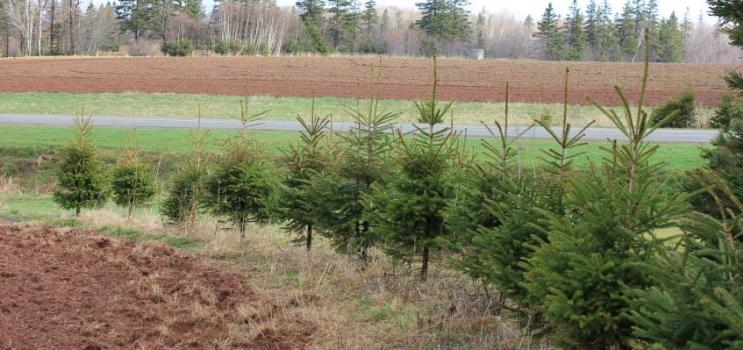Greening Spaces Program

The Greening Spaces Program (GSP) is a tree planting program that was developed for local Island communities, schools and volunteer interest groups. Greening Spaces
- diversify public properties
- buffer prevailing winds
- provide shade
- reduce noise
- protect lands along streams and rivers
- return abandoned farm land to forest cover
- control soil erosion
- provide wildlife habitats and/or
- create outdoor learning areas (such as arboreta or tree & shrub nurseries)
What does the department provide?
The Department of Environment, Energy and Climate Action will provide:
- quality native tree and shrub seedlings
- educational materials and technical advice.
What do we have to provide?
Communities, schools and volunteer groups must:
- select the planting site
- obtain permission to plant the site (if required)
- prepare a planting plan
- and provide the labour
- recognize and promote the Greening Spaces Program.
Proposals will be evaluated based on the intent and feasibility of the proposal.
How can we determine which trees and shrubs are right for our project?
To learn how to identify Acadian Forest trees and shrubs learn about planting site needs at Greening Spaces: Using Native Trees and Shrubs presentation.
Project Site Possibilities
| School Grounds: | any area of school property including the yard, parking areas, play grounds and sports fields to enhance the green qualities of the school property, create learning places, or shelter the school from winter winds or other land uses. |
| Streambanks and Buffer Zones: | an area extending out 10 meters or more from the water’s edge, and which may already have grasses and some live trees and shrubs. |
| Hedgerows: | a narrow belt of vegetation, dominated by a variety of shrubs and occasional trees, separating one area of land (usually farm fields) from another. Hedgerows stabilize soils, prevent wind erosion, accumulate and distribute snow loads, and can serve as travel corridors for wildlife seeking to move from one area to another. |
| Wind and Noise Buffers: | a narrow belt of vegetation, dominated by a variety of shrubs and occasional trees, which is designed to reduce heating requirements by sheltering a building or school from winter winds or to reduce noise from traffic and industrial activities. |
| Parks, Recreational Areas and other Community Lands: | lands which are publicly owned, accessible, and not being utilized for commercial or industrial purposes. |
| Abandoned or Marginal Farm Lands: | lands that are no longer productive due to soil loss and exposed subsoil, poor drainage, or high sloped and therefore at risk for erosion. Often farming will have ceased on these areas so grasses and some small trees may have begun to reclaim the area. |
All projects are required to promote the GSP and its goal of making Island communities and school grounds greener, healthier places to live, work and learn.
Greening Spaces Program Application Form
To apply for the program, please submit the Greening Space Program application form.
Contact Information
Greening Space Program Coordinator
Forests, Fish and Wildlife division,
Department of Environment, Water and Climate Action
J. Frank Gaudet Tree Nursery
Box 2000
Charlottetown, PE C1A 7N8
Phone 902-368-4711
Fax: 902-368-4713
E-mail: greeningspaces@gov.pe.ca